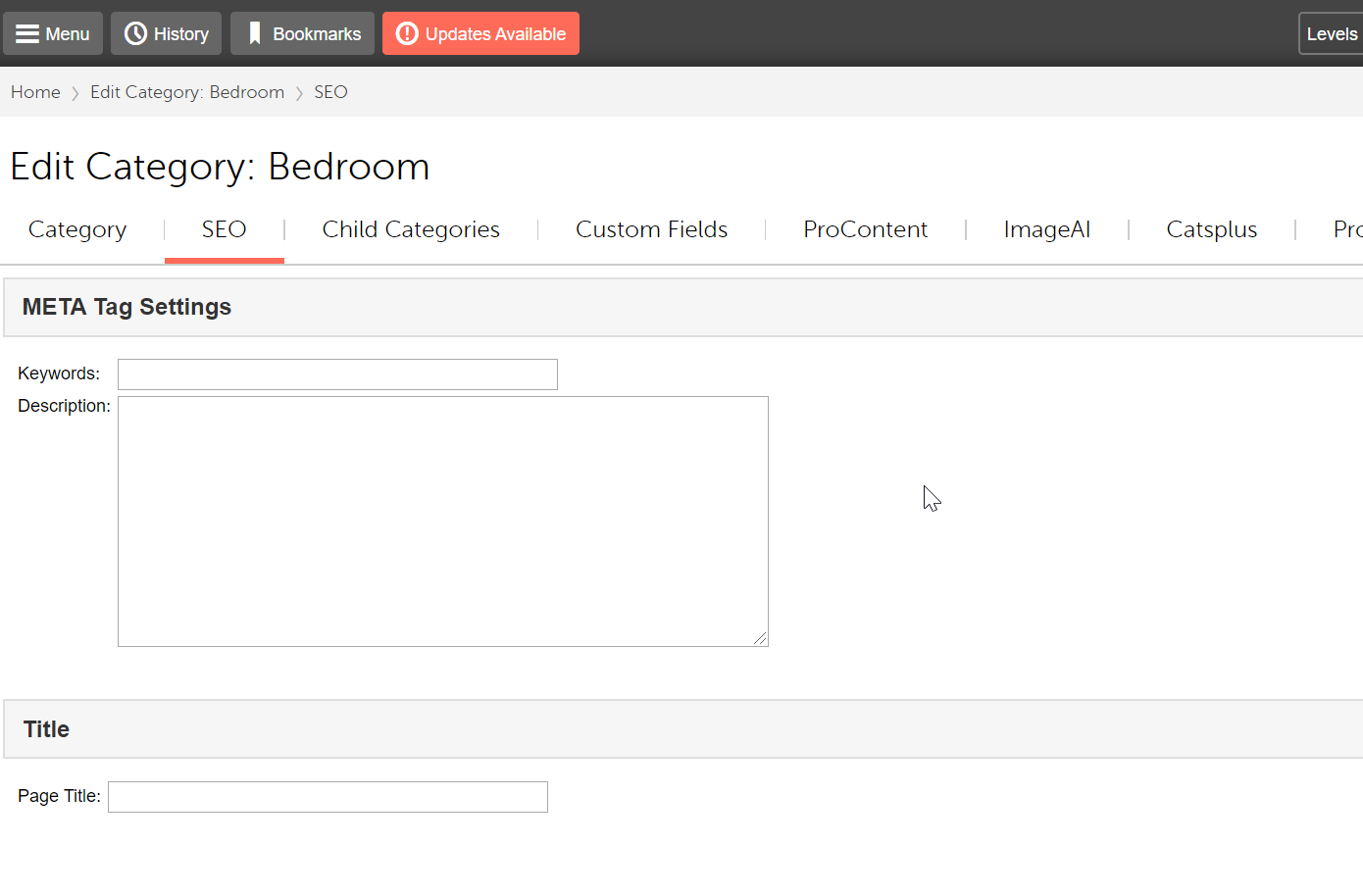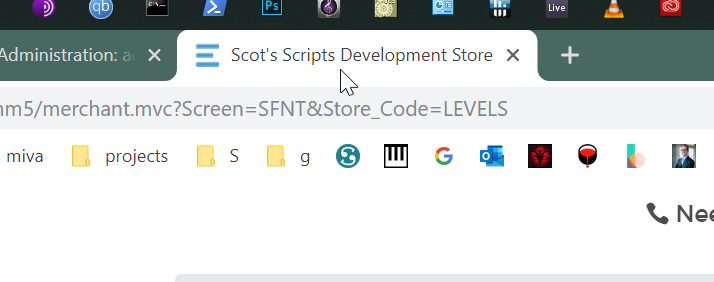Miva Merchant is a fantastic eCommerce platform that is used by businesses that don't want to deal with the inconsistencies, bugs, and security hassles that various other eCommerce platforms deal with.
However, once you have your Miva Merchant store set up, your product catalog finished, some custom images on the home page, what's next?
Most new Miva Merchant stores have similar SEO issues when they go online, and if you are interested in fixing all of them, check out our Miva Merchant Checklist (with an infographic you can print out for reference):
https://www.scotsscripts.com/blog/seo-checklist-by-scots-scripts.html
The First SEO Task for New Miva Merchant Stores: Category Descriptions
Your product categories are important for SEO but Miva Merchant does not come with built in category description fields. That means you need to manually set category descriptions in your SEO tab.
Move Your SEO Tab
The SEO tab is sometimes hidden or at the end of the tab list. Let's move it to the beginning so you are reminded to use the SEO tab every time you create a category.
First open up a category in the Miva Merchant admin and see if the SEO tab is visible. If not, click the More button and select the Edit Tab Display Order option.

After you click on that, find the SEO tab and drag it up until it's under the Category tab.

When you're done, the SEO tab will be right where you need it. Do this in the product edit screen and the page edit screen because SEO is a habit and everything you do in your store should have some SEO value, and this makes it much easier to remind yourself of that.

After you have moved the SEO tab to an easy to access location, click on it to bring up the Category meta data.

First, fill in the description. This will be used as the meta description. Normally it will never be shown on the page, so stuff it full of keywords and phrases.
Don't worry so much about the keywords since the majority of serious search engines don't use them (content is key, not key words.)
For example, this example category is "bedroom". A good SEO description does not include a lot of adjectives. Search engines don't care if you are writing a poem. This might look good to a human, but for SEO it's useless:
"Visit our beautiful bedroom collection where you'll find the most modern designs to help you create the bedroom of your dreams. Don't wait, supplies are limited."
This is a fairly basic description, but better used somewhere in the product description, not in category SEO. For category SEO the description should use more key terms and phrases.
"Fashionable bedroom furniture, end tables, beds, mattresses, mirrors, vanities, and closet organizers and lighting to help you create a comfortable and modern bedroom."
How do you find key terms and phrases?
If you're just getting started with SEO you'll be happy to know there is a VERY easy way to create the best descriptions you can: Steal from competitors.
Search for your product online and go to the first non-sponsored site that comes up and check the meta data on the page and use it. Edit it so it's not word for word, but use it as a base for your own.
How do I see meta data?
You can use the inspector (right click on the page and find the "inspector" option) but that's mainly a developer tool. To make is super easy, I use a Chrome plugin called SEO Meta:
https://chrome.google.com/webstore/detail/seo-meta-in-1-click/bjogjfinolnhfhkbipphpdlldadpnmhc/
This plugin puts a button in my browser that opens up a box with all the meta information you could want. Here's an example from the home page on this site. If you scroll down you see all the other meta, plus other information.

Miva Merchant SEO Extra Tip
Another issue with Miva Merchant out of the box is the page titles. They are called things like "Storefront" and "About Us". Who will ever visit a page called "Storefront" or a page called "About Us"?
Open the SEO tab in all your storefront (SFNT) page and you'll see that the page title is blank.

Is the front page of your site being called "Storefront" good SEO? Not exactly.
So for example, if your store is called, "Best Tires", change the SEO page title to something like, "Best Tires Storefront". In this case, I'll change it to, "Scot's Scripts Development Store"
I will also change the regular page title to match the SEO title. Now when I open the page it looks like:

When you visit the page, the browser tab will now say, "Scot's Scripts Development Store" instead of "Storefront"

Go through all the important pages on your site. You can skip the Product (PROD) and Category (CTGY) pages because their SEO will be derived form the product or category that the customer is visiting.
Schema Microdata SEO
This is important too. It's not something I can explain in a post, but we offer a services that creates dynamic schema microdata for every page on your site. It usually takes about an hour to install, including any customizations necessary for how your site is put together. Contact us for more information or if you have any questions about anything you've seen here.
Good luck, and remember, SEO is a habit. Work on it every day to increase sales and search engine visibility.

